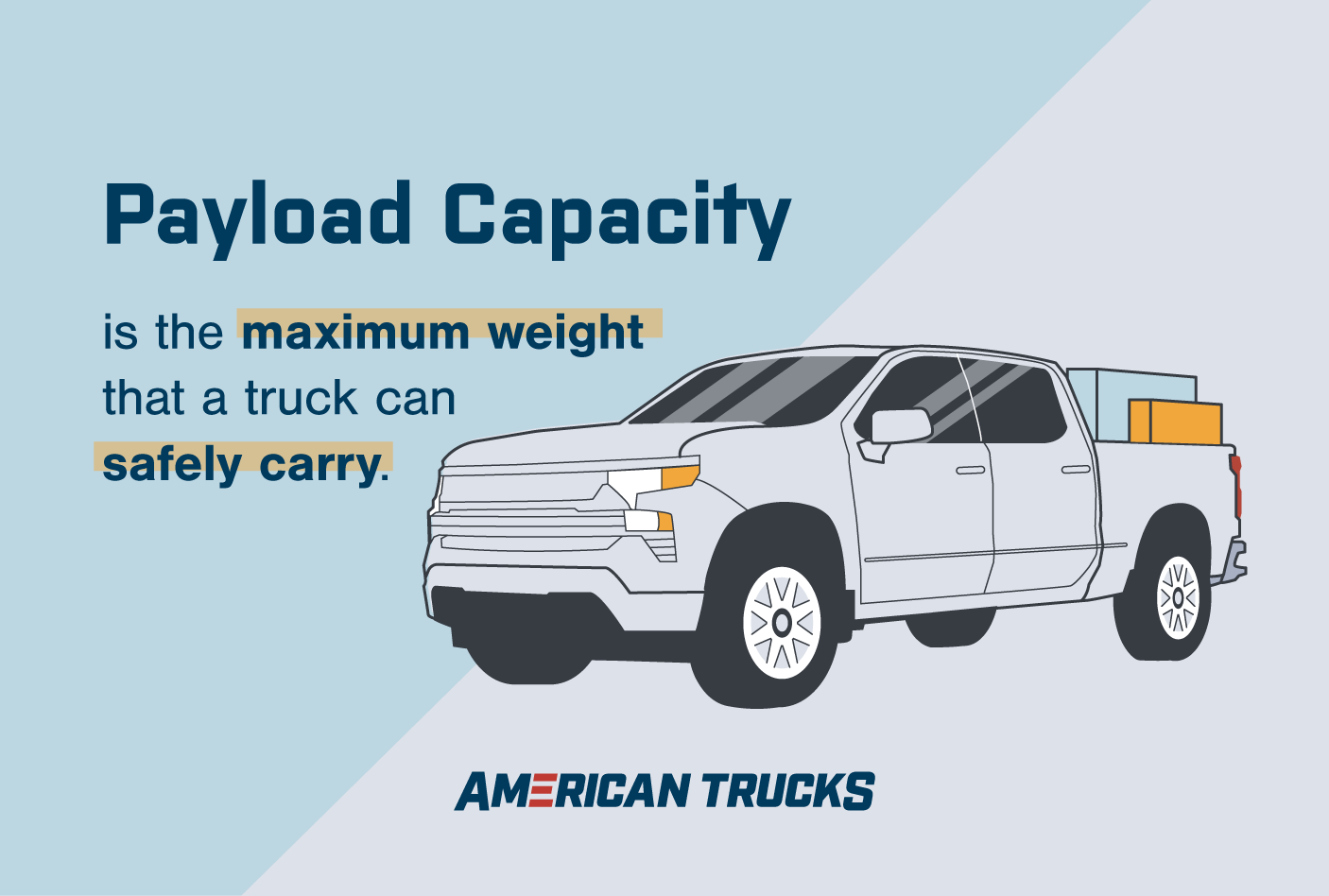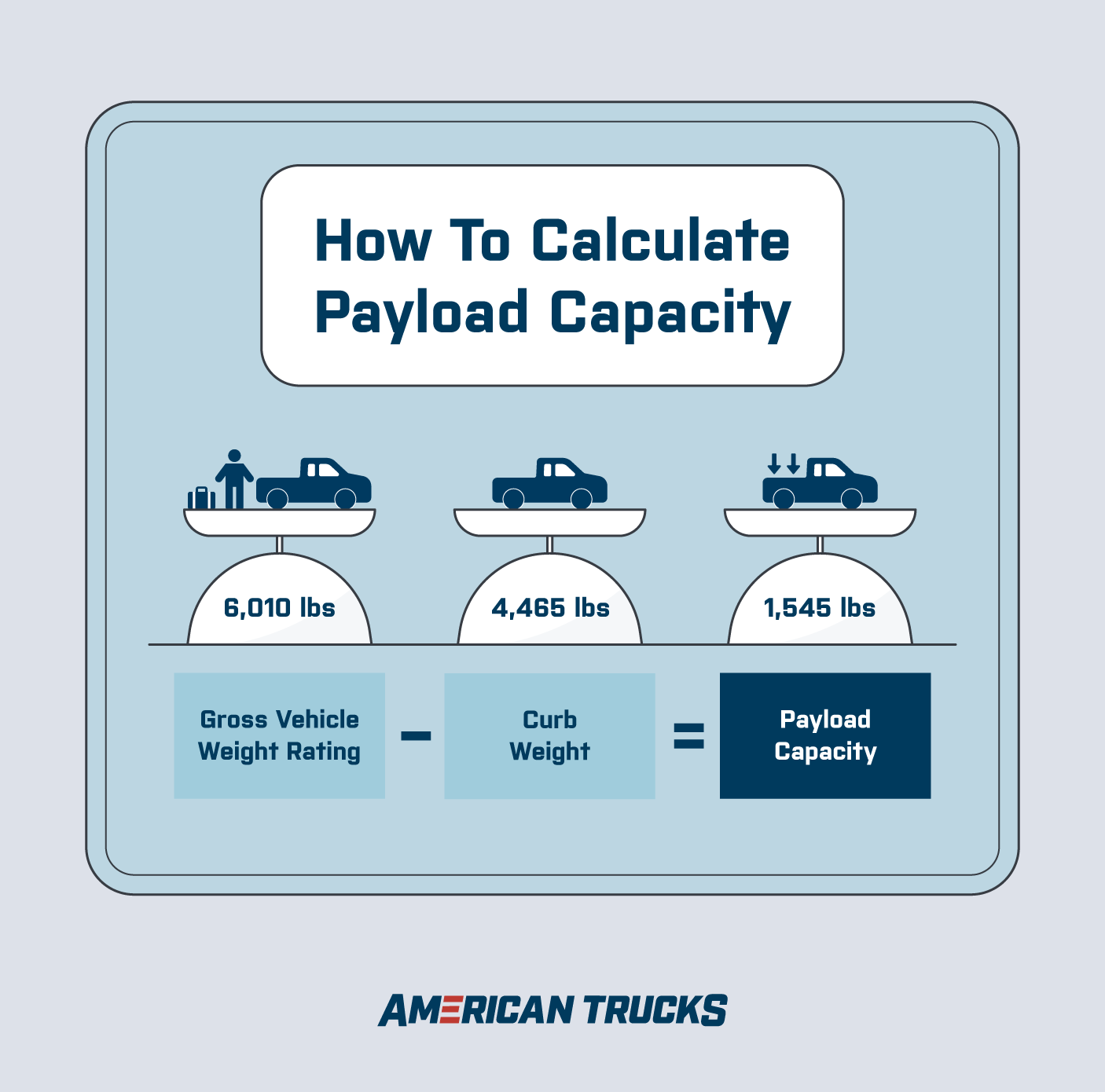|
A truck's payload capacity is the maximum amount of weight it can safely carry–including the weight of the vehicle by itself, any equipment and passengers. |
Whether you use your truck to transport dirt bikes or are the person your friends call when they need help moving, you might often find yourself loading your truck up with hundreds or even thousands of pounds of extra weight.
However, before you agree to help your friend load up your truck, be sure to note your truck's payload capacity.
So, what is payload capacity? Continue reading to learn how to calculate payload capacity, safety tips, and more.
Key Takeaways:
- Payload capacity is how much weight a vehicle can carry safely.
- Towing capacity is the maximum weight a vehicle can safely pull.
- To calculate payload capacity, subtract your vehicle's curb weight from the gross vehicle weight.
- To calculate towing capacity, subtract your vehicle's curb weight from the gross combined vehicle weight rating.




